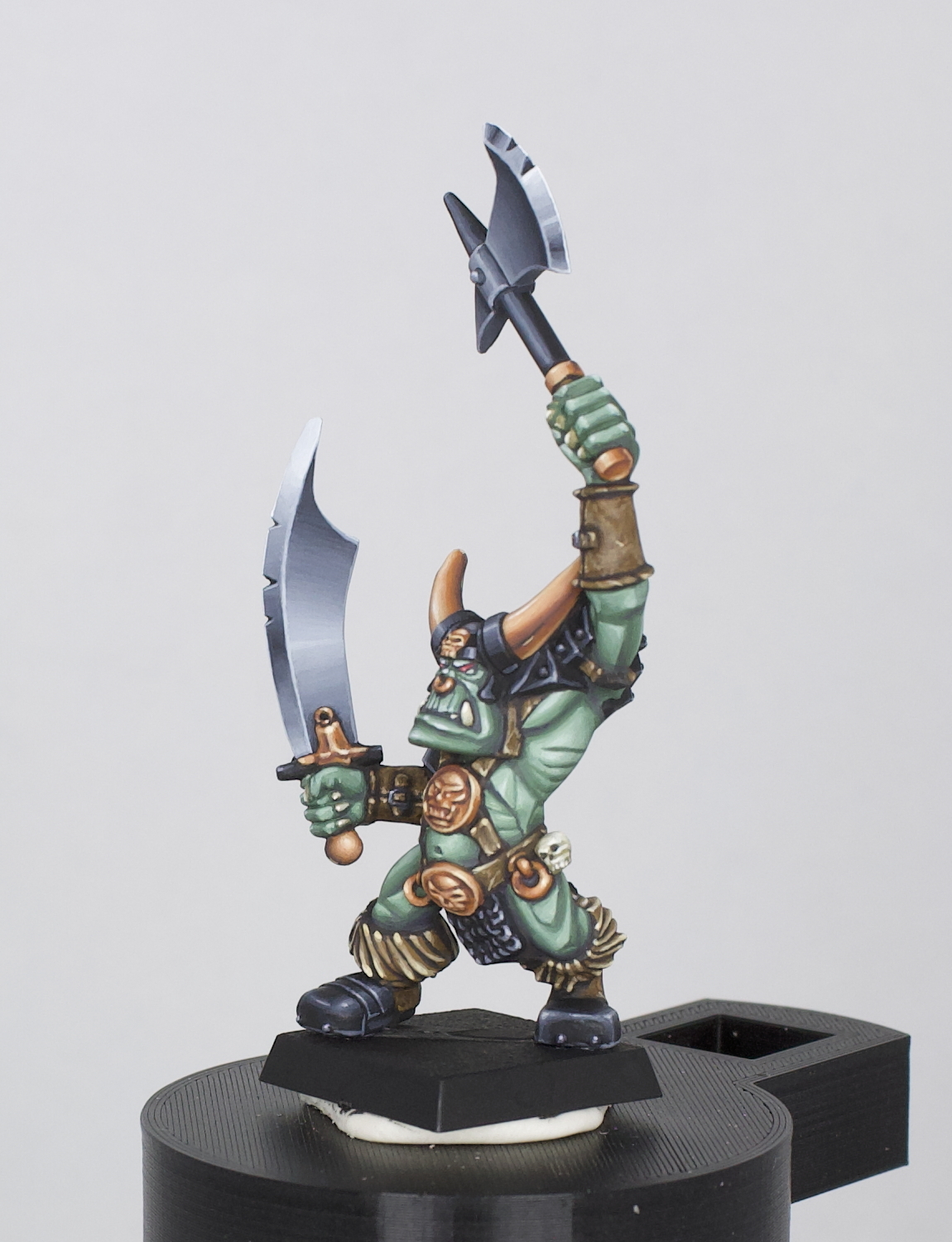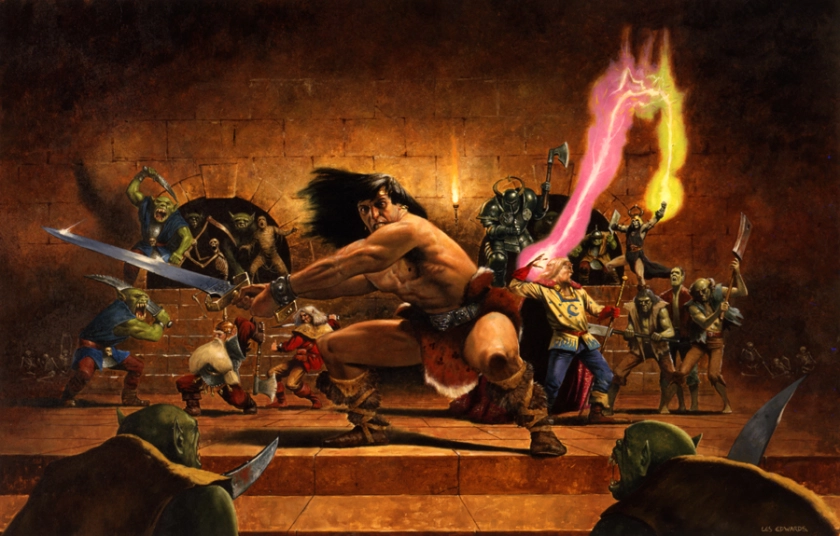In addition to the rank and file minions encountered throughout HeroQuest, there are several missions that feature more powerful enemies that one might consider to be “bosses.” The first of these appears rather early in the original game, being featured in the third quest, “Lair of the Orc Warlord”.
*** SPOILER *** Having recently rescued Sir Ragnar from bondage, the heroes are tasked with eliminating the powerful Orc Warlord, Ulag, who was responsible for Ragnar’s imprisonment. Ulag is a more powerful version of the standard Orc, rolling four dice for attack, five dice for defense, having two body points and three mind points (as opposed to the 3, 2, 1, and 2 values for standard Orcs). *** SPOILER ***
In order to represent Ulag on the board, it is suggested to use the standard Orc miniature with the notched sword, as previously seen sporting an evil black tunic. I was never quite satisfied with this substitution, as the regular Orcs are not terribly threatening. So, I decided to find a suitable proxy miniature that could be used to represent Ulag and any other Orc Warlords that may appear in later quests. Luckily, the miniatures for HeroQuest were designed and produced by Games Workshop, leading to an aesthetic nearly indistinguishable from that company’s other properties, WarHammer and Talisman. This means that there are a bevy of visually appropriate models that can be incorporated into HeroQuest, either for individual proxies or entire expansions. One particular sculpt, the Black Orc (released as a playable character for Talisman and a regiment for WarHammer), is perfect for a beefed-up, swole Orc chieftain.
As is typical with the hard plastic models of this era, the Black Orc is well sculpted with only a few, easy to remove mold lines. The details are nice and chunky with the somewhat whimsical look that really defined the 90’s fantasy style. In fact, the only problem area of the miniature is the chainmail, which may actually be worse than that found on the stock HeroQuest miniatures. This area looks like a single perforated sheet rather than being a series of interlocked rings. The rest of the armor is crisp and neatly segmented.
As far as the base is concerned, for now he is mounted on a standard slotted base. I was originally intending for this to be a gaming miniature, but the final product really exceeded my expectations. I’m afraid that he may have graduated into a display miniature, which means that I will eventually have to create a custom base to complement the paintjob. I have a few other projects in the works that would benefit from custom bases, so this may be the next 3-D sculpting task I undertake.








And that’s all there is to say about this project. What an amazingly fun miniature to paint! This cartoonish style of fantasy is what originally drew me to miniature painting, and this particular model perfectly captures that look. In my opinion, the GW sculpts from this era are the pinnacle of plastic figures, having just enough detail without being overly complicated. If only they could have made better chainmail….
Flesh:
The green skin was base coated with VMC Gunship Green (70.895). Shade was added with a mix of Gunship Green and Dale Rowney Purple Lake Ink (437) in an approximately 2:1 mix. The major muscle forms were then lightened with progressive mixes of Gunship Green and VMC Green Sky (70.974), followed by highlights with the progressive inclusion of VGC Wolf Grey (72.047). Limited point highlights of pure Wolf Grey were applied to the brightest areas.
Black Armor:
The black metal was painted with a standard non-metallic metal approach using VMC Black (70.950) and VMC Pale Grey Blue (70.907).
Copper Armor:
The areas of copper were blocked in with VMC German Camo Black Brown (70.822), then base coated with VGC Parasite Brown (72.042). Shade was applied with mixes of Parasite Brown and progressive amounts of VMC Mahogany Brown (70.846), with the darkest shadows being a 1:1 mix of Mahogany Brown and German Camo Black Brown. Highlights were applied with mixes of Parasite Brown and progressive amounts of VMC Sunny Skintone (70.845), with limited point highlights with a 1:1 mix of Sunny Skintone and VMC Ivory (70.918).
Leather:
The belts, bracers, boots, and pouch were all painted with VMC Chocolate Brown (70.872). This was lightened with VMC Flat Earth (70.983), then highlighted and textured with VMC Dark Sand (70.847). The pouch and boot tassles were intentionally painted lighter than the other sections for visual separation.
Steel:
The blades were painted with a standard non-metallic metal approach using VMC Black (70.950) and VMC Pale Grey Blue (70.907).
